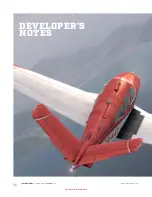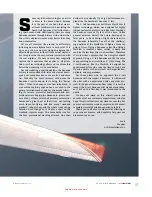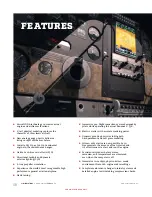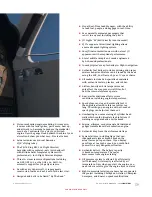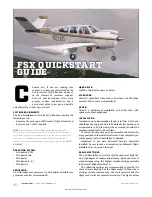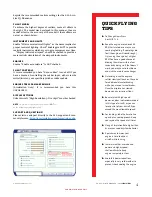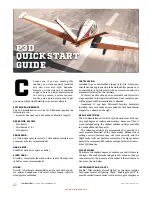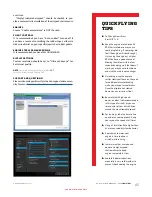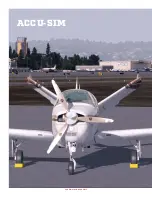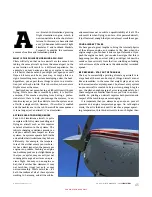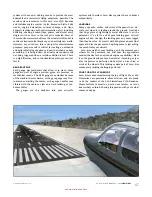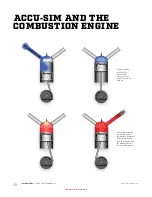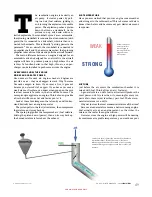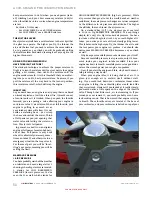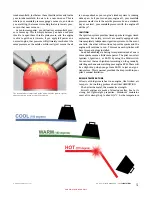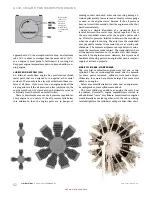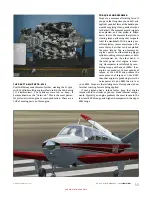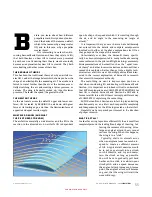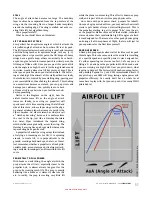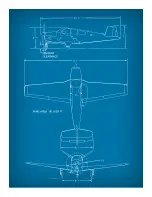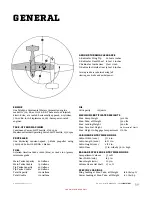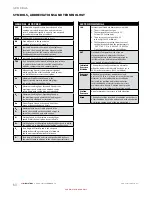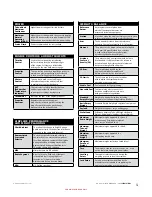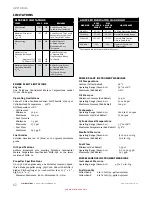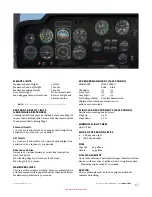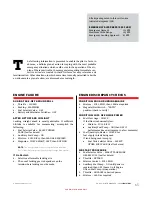
50
A2A
SIMULATIONS :::
ACCU-SIM V35B BONANZA
ACCU-SIM AND THE COMBUSTION ENGINE
FOR SIMULATION USE ONLY
best power mixture (0.08%) when you need power (take-
off, climbing), and your best economy mixture (.0625%)
when throttled back in a cruise when engine temperatures
are low.
So, think of it this way:
• For HIGH POWER, use a RICHER mixture.
• For LOW POWER, use a LEANER mixture.
THE MIXTURE LEVER
Most piston aircraft have a mixture lever in the cockpit that
the pilot can operate. The higher you fly, the thinner the
air, and the less fuel you need to achieve the same mixture.
So, in general, as you climb you will be gradually pulling
that mixture lever backwards, leaning it out as you go to the
higher, thinner air.
HOW DO YOU KNOW WHEN YOU
HAVE THE RIGHT MIXTURE?
The standard technique to achieve the proper mixture in
flight is to lean the mixture until you just notice the engine
getting a bit weaker, then richen the mixture until the
engine sounds smooth. It is this threshold that you are dial-
ing into your 0.08%, best power mixture. Be aware, if you
pull the mixture all the way back to the leanest position,
this is mixture cutoff, which will stop the engine.
INDUCTION
As you now know, an engine is an air pump that runs based
on timed explosions. Just like a forest fire, it would run out
of control unless it is limited. When you push the throttle
forward, you are opening a valve allowing your engine to
suck in more fuel / air mixture. When at full throttle, your
engine is pulling in as much air as
your intake system will allow. It is not
unlike a watering hose – you crimp
the hose and restrict the water. Think
of full power as you just opening that
water valve and letting the water run
free. This is 100% full power.
In general, we don’t run an airplane
engine at full power for extended peri-
ods of time. Full power is only used
when it is absolutely necessary, some-
times on takeoff, and otherwise in an
emergency situation that requires it.
For the most part, you will be ‘throt-
tling’ your motor, meaning you will be
setting the limit.
MANIFOLD PRESSURE
= AIR PRESSURE
You have probably watched the weather
on television and seen a large letter L
showing where big storms are located.
L stands for LOW BAROMETRIC
PRESSURE (low air pressure). You’ve
seen the H as well, which stands for
HIGH BAROMETRIC PRESSURE (high air pressure). While
air pressure changes all over the world based on weather
conditions, these air pressure changes are minor compared
to the difference in air pressure with altitude. The higher
the altitude, the much lower the air pressure.
On a standard day (59°F), the air pressure at sea level
is 29.92 in. Hg BAROMETRIC PRESSURE. To keep things
simple, let’s say 30 in. Hg is standard air pressure. You have
just taken off and begin to climb. As you reach higher alti-
tudes, you notice your rate of climb slowly getting lower.
This is because the higher you fly, the thinner the air is, and
the less power your engine can produce. You should also
notice your MANIFOLD PRESSURE decreases as you climb
as well.
Why does your manifold pressure decrease as you climb?
Because manifold pressure is air pressure, only it’s mea-
sured inside your engine’s intake manifold. Since your
engine needs air to breath, manifold pressure is a good indi-
cator of how much power your engine can produce.
Now, if you start the engine and idle, why does the mani-
fold pressure go way down?
When your engine idles, it is being choked of air. It is
given just enough air to sustain itself without stall-
ing. If you could look down your carburetor throat when
an engine is idling, those throttle plates would look like
they were closed. However if you looked at it really closely,
you would notice a little space on the edge of the throttle
valve. Through that little crack, air is streaming in. If you
turned your ear toward it, you could probably even hear a
loud sucking sound. That is how much that engine is trying
to breath. Those throttle valves are located at the base of
your carburetor, and your carburetor is bolted on top of your
Содержание BONANZA ACCU-SIM V35B
Страница 1: ...A2ASIMULATIONS BONANZA ACCU SIM V35B BONANZA ...
Страница 3: ...A2ASIMULATIONS BONANZA ACCU SIM V35B BONANZA ...
Страница 5: ...www a2asimulations com ACCU SIM V35B BONANZA A2ASIMULATIONS 5 FOR SIMULATION USE ONLY ...
Страница 27: ...www a2asimulations com ACCU SIM V35B BONANZA A2ASIMULATIONS 27 FOR SIMULATION USE ONLY ...
Страница 36: ...36 A2ASIMULATIONS ACCU SIM V35B BONANZA www a2asimulations com FOR SIMULATION USE ONLY DEVELOPER S NOTES ...
Страница 44: ...44 A2ASIMULATIONS ACCU SIM V35B BONANZA www a2asimulations com FOR SIMULATION USE ONLY ACCU SIM ...
Страница 54: ...54 A2ASIMULATIONS ACCU SIM V35B BONANZA www a2asimulations com FOR SIMULATION USE ONLY PROPELLERS ...
Страница 58: ......
Страница 64: ...64 A2ASIMULATIONS ACCU SIM V35B BONANZA www a2asimulations com FOR SIMULATION USE ONLY EMERGENCY PROCEDURES ...
Страница 68: ...68 A2ASIMULATIONS ACCU SIM V35B BONANZA www a2asimulations com FOR SIMULATION USE ONLY ...
Страница 98: ...100 A2ASIMULATIONS ACCU SIM V35B BONANZA www a2asimulations com FOR SIMULATION USE ONLY AUTOPILOT ...
Страница 110: ...110 A2ASIMULATIONS ACCU SIM V35B BONANZA www a2asimulations com FOR SIMULATION USE ONLY CREDITS ...
Страница 112: ......

